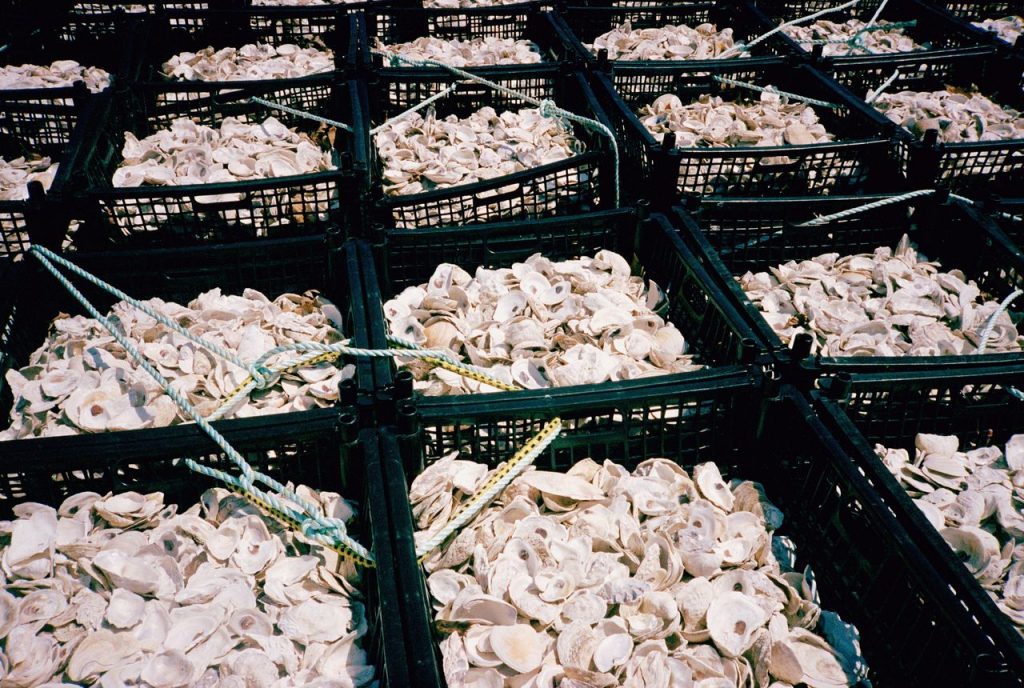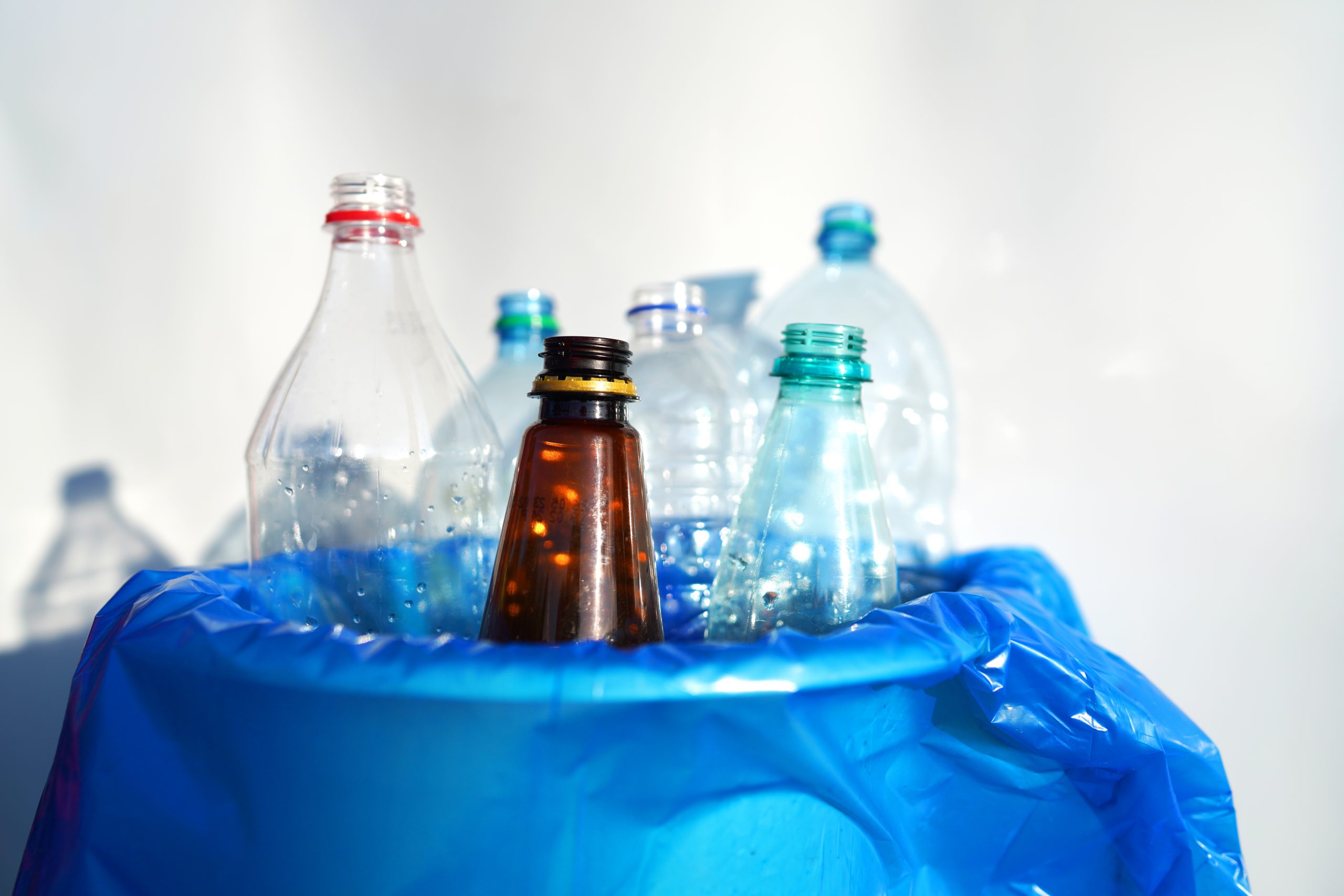Each week a garbage truck pulls up and workers collect the contents of your blue bin. Your mixed recycling contains lots of plastics—shampoo bottles, yogurt cups, milk jugs and more—but how much actually gets recycled?
The answer isn’t what you want to hear. But knowing it will help you get smarter about sorting your trash.
Just 13.6% of waste plastic containers and packaging—what goes in blue bins as well as the trash—were sent to a recycling facility in 2018, according to the Environmental Protection Agency’s most recent data. Another 16.9% got incinerated. Nearly 70% went to landfills.
Compare that to waste paper and cardboard: The EPA says 81% of what we threw away in 2018 got recycled. The rate for glass containers was about 31%. For aluminum, including cans and foil, it was around 35%.
The EPA says it will publish its next report in 2025. More recent industry figures suggest plastic’s problems aren’t improving.
Recycling plastic is a challenge because of chemistry…and business.
There are seven categories of plastic resins—including a catchall called “other.” Most types aren’t even considered for curbside recycling. Meanwhile, businesses have touted their containers as recyclable as they look to keep consumers and regulators happy. Yet for recycling to work, there has to be demand for all the used plastic that we toss. Today virgin plastic is both cheaper and better, so there’s little incentive for companies to invest in recycling facilities.
Last month Rob Bonta , California’s attorney general, sued Exxon Mobil , accusing the oil giant of misleading consumers about plastic recyclability. Exxon Mobil suggested that recycling could solve the plastic waste crisis, said Bonta, when it “clearly knew this wasn’t possible.” In response, Exxon said California officials were casting blame on others for a system that hasn’t been effective for decades.
So, what does this mean for your weekly recycling ritual? Read on.
What gets recycled
You know the numbers on plastic items ranging from one through seven? Just because something has a number doesn’t make it recyclable.
Two plastics, widely used in soda bottles, milk jugs and other popular containers, are most often recycled.
PET —polyethylene terephthalate, used for soda and other drink bottles—goes by number 1 and is the most highly recycled plastic in the U.S. As of 2022, about 29% of the PET bottles sold to consumers were purchased by reprocessors or exported for recycling, according to the National Association for PET Container Resources.
HDPE —high-density polyethylene, found in milk jugs and detergent containers—is number 2. About 27% of HDPE bottles and jugs were bought by reprocessors or exported for recycling in 2022, according to the Association of Plastic Recyclers.
PP —polypropylene, which bears the number 5 and is commonly used in yogurt and butter containers— hasn’t been widely recycled in the U.S. In recent years, more recyclers have shown interest in processing the material, but check your town’s recycling guidelines to see if PP is accepted.
Most flexible packaging you bring home from the supermarket—bags, pouches, toothpaste tubes—isn’t typically accepted in curbside recycling bins although you can drop some of it off at supermarkets, where it could be collected to become trash bags or building material. Rigid containers made from polyvinyl chloride (No. 3), polystyrene (No. 6) or multilayer plastics (No. 7) generally shouldn’t go in blue bins either.
Your town might still tell you to put all your rigid plastic in the bin, numbers 1 through 7. That’s usually to up the odds of collecting more 1s and 2s. The facility will sort out other plastic to be sent to a landfill or an incinerator.
“It was initially thought if you just said put all containers in the bin, it would minimize confusion,” says Scott Saunders, head of recycling at KW Plastics, one of North America’s largest recyclers. “Trying to train individual households to put in specific plastics was so difficult.”
Why rates are so poor
The U.S. used to export recycling to China, but the country stopped taking most foreign waste in 2018 . If American companies aren’t interested in making new products from recycled plastic—which typically costs more than virgin plastic—there’s no incentive to develop the infrastructure to collect, sort and reprocess old packaging.
The variety of plastics on store shelves today compounds the challenge. Trays, clamshell food containers and other non-bottle or jar shapes are often tossed aside, even those made from PET and HDPE. Recycling itself degrades plastic, meaning it’s usually only recycled a couple of times. Most food packaging isn’t turned back into food packaging.
Sorting and cleaning a wide assortment of plastic containers is expensive, in part due to the many different pigments and other additives used. Collected plastic is often downcycled into trash bags, Frisbees or park benches, which can’t be recycled again. That bright orange Tide bottle? If it’s lucky, it will become a dull gray building material.
States have used deposits to boost recycling rates of easy-to-recycle containers like PET and streamline the sorting process. Ten U.S. states (and Guam) charge a refundable deposit on drink containers. They’re returned in a separate system, guaranteeing a cleaner supply of PET.
Five states have passed laws to shift the waste-disposal tab from taxpayers to brand owners. The extra money can fund the sorting and collection of recyclables. While 73% of American households have access to recycling programs according to the Recycling Partnership, a nonprofit, there’s room for improvement, particularly in less densely populated areas. North Dakota’s access is 34% while Vermont’s is 92%.
Governments could also require that companies use recycled material in their containers. California in 2022 began mandating companies use 15% recycled content in their plastic drink bottles. This rises to 25% next year.
Chemical companies have lately increased investments in “ chemical recycling ,” which breaks down plastic into basic building blocks so it can be repeatedly made into new packaging, including for food. Critics, including the California attorney general, say it’s energy intensive and expensive. The jury’s still out on how effective it will be.
What you can do
If your town offers recycling, use it. You can also follow some basic rules to help easy-to-recycle plastics become something new.
• Look out for number 1 (and 2). When sorting your trash, give priority to PET and HDPE bottles and jars. You don’t have to clean them but make sure they’re empty. To ensure the caps also get recycled, keep them on the bottles.
• Steer toward clear. Noncolored plastic containers are easier to recycle—and are less likely to be downcycled—so opt for brands that use clear containers (and ones made with recycled material).
• Avoid 3, 6 and 7. Remember packaging made from PVC and polystyrene is hardly ever recycled. Same goes for those “other” items, including food pouches and straws.
• Don’t gum up the works. Throwing bags, six-pack rings and other flexible plastics into your blue bin could mess up your recycling facility’s sorting machinery. And pieces smaller than a credit card won’t be sorted.
• Bag your bags. Look for plastic-bag drop-off programs at Walmart and Target or your local supermarket. Some other flexible items may be collected at these locations, too.
Write to Saabira Chaudhuri at Saabira.Chaudhuri@wsj.com




